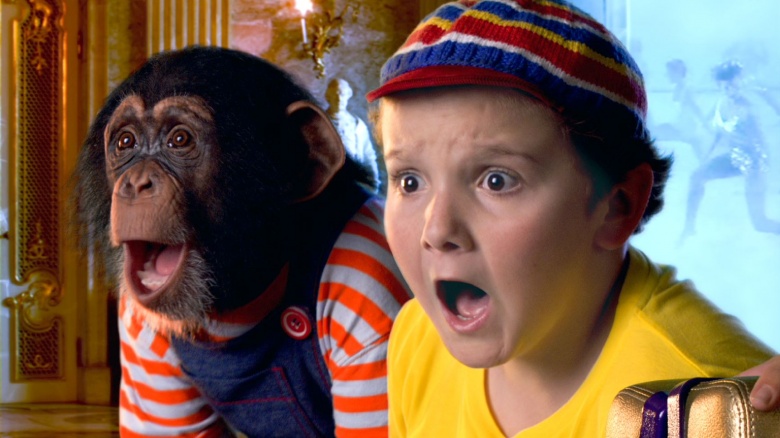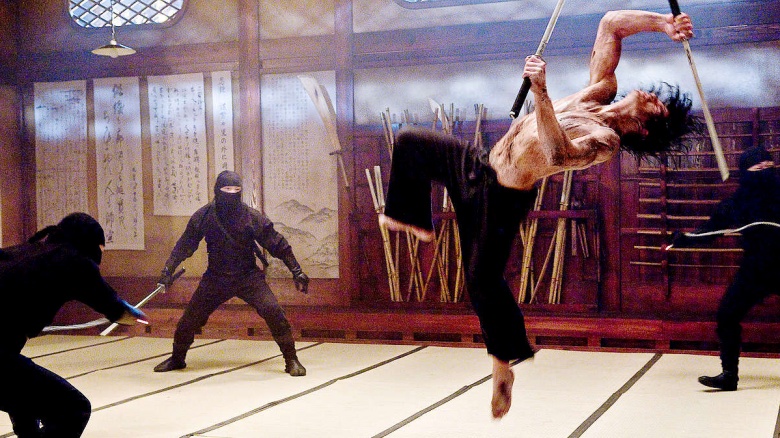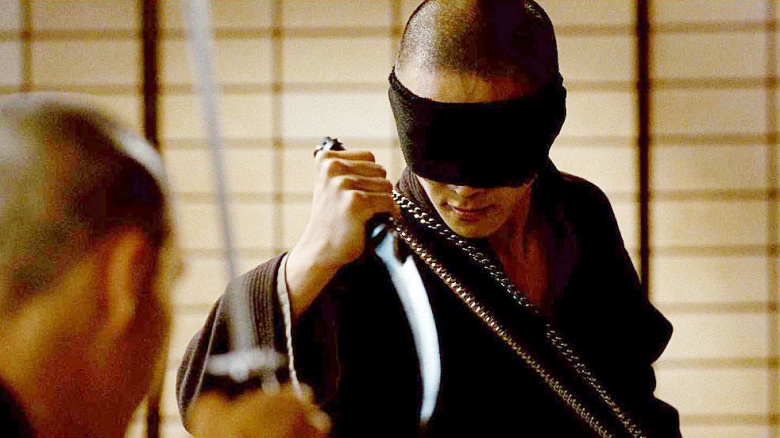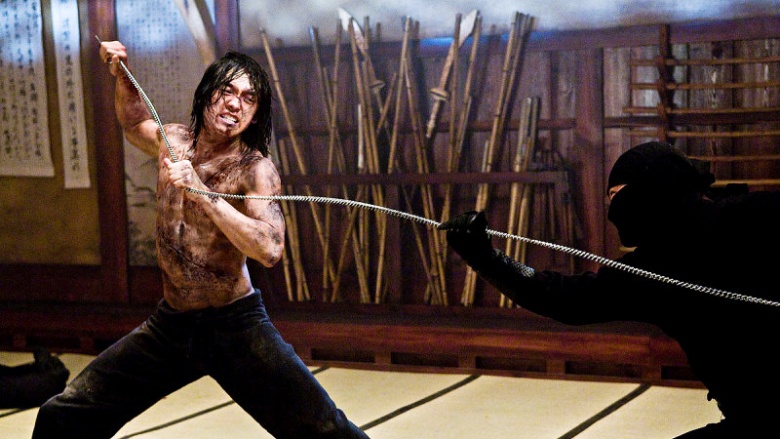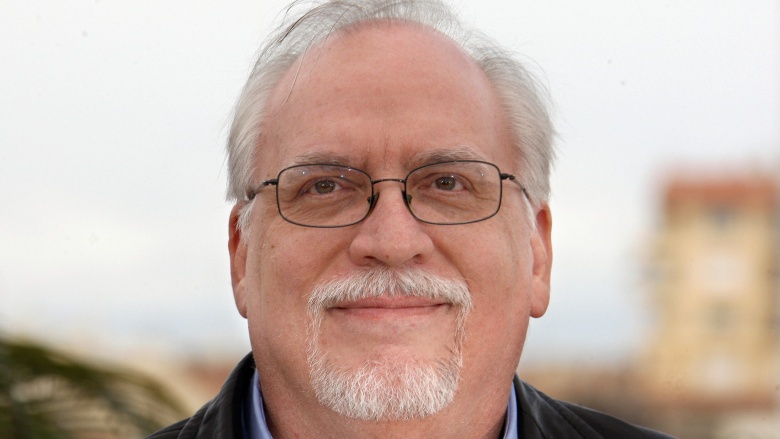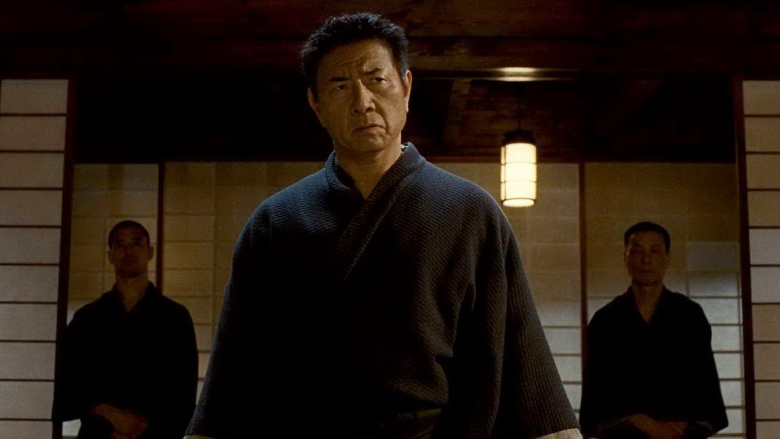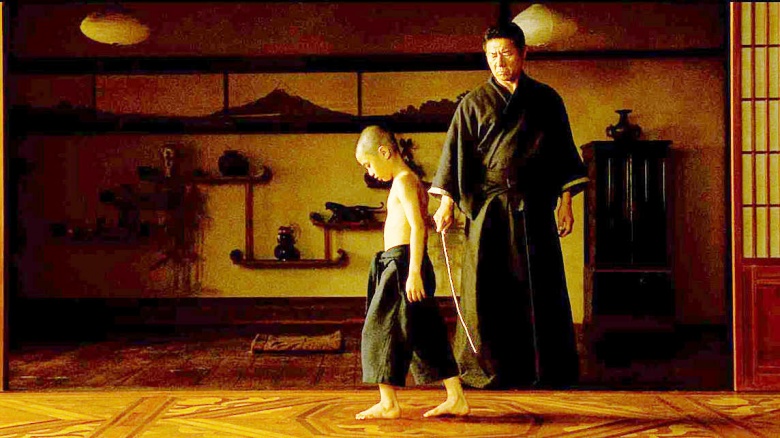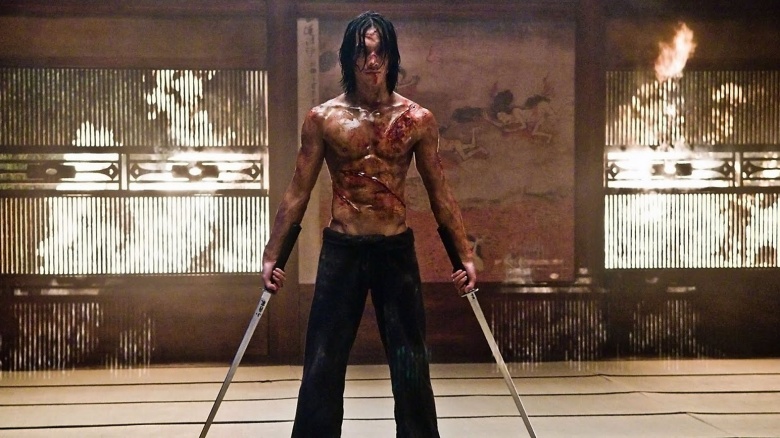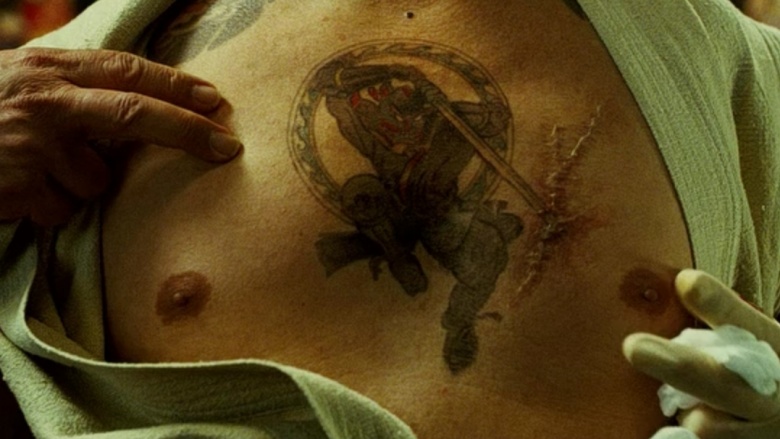The Untold Truth Of Ninja Assassin
Directed by James McTeigue (of V for Vendetta fame) and produced by the Wachowskis, Ninja Assassin is the story of Raizo, an orphan who's recruited into a shadowy clan of ninjas who carry out political assassinations. When he's forced to turn his back on the ninja clan, he finds himself in the crosshairs of the world's deadliest killers. Or, well, he would be...if shurikens and katanas and feet had crosshairs.
When it hit theaters in 2009, Ninja Assassin promised all the fun of a B-movie with all the style of a Hollywood blockbuster. Did it deliver? In spades. While mainstream audiences mostly ignored this blood-filled homage to old ninja cinema, it's built up a cult following in the years since its release. Here are some cool facts you probably never knew about Ninja Assassin.
The movie originated as a joke
Remember Speed Racer? The Wachowskis were the hottest thing in Hollywood after the Matrix films, and their next project, V for Vendetta (which they wrote and produced), only showed the world that they could do even more. Then came Speed Racer. It wasn't that the movie was terrible, it just...wasn't good. They took an awful script and gave it a high-shine VFX polish to no avail, but one happy coincidence that came out of Speed Racer was interest in collaborating with Rain, an unknown actor in the West who happens to be one of Korea's biggest pop stars.
While filming Speed Racer, Chad Stahelski, a stunt coordinator who had worked on the Matrix trilogy, was brought in to help choreograph a couple fight scenes, some of which involved Rain. The whole stunt team was impressed with this seemingly unknown guy (it wasn't until later that they found out how huge he is in Korea). From there, things just kind of rolled in the right direction for Ninja Assassin. As Stahelski put it, "We always kind of had a running joke with the Wachowski brothers about making a kickass ninja movie. We told them we found our ninja, and brought Rain in to do a fight sequence for him...and everyone was like 'Holy s***! This guy is good!'" Only a few months later, production was in motion on that "running joke," Ninja Assassin.
Rain did his own stunts
All too often, producers will stick a handsome actor in an action movie, then leave all the heavy lifting to the stunt guys. We even kind of idolize the actors who do their own stunts, like Jackie Chan and Tom Cruise. With the insane amount of stuntwork in Ninja Assassin, it'd be easy to assume that most of that fighting and flipping and jumping out of windows was done by a trained stuntman while Rain sat back and waited for the next scene that showed his face. Only that's not the way it happened. Almost as a counterpoint to The Matrix, Ninja Assassin did it all for real—no green screen, no wires, no camera gimmicks. As Rain told Time, "90 percent of the time, it's really me, doing all of this."
So how does a pop singer become a honed killer (at least in looks)? The answer: months of hardcore training. For eight months straight, Rain trained five days a week for eight hours a day to be able to pull off not only the fight scenes, but the ridiculous stunts, like flipping off moving cars. That goes way beyond dedication. Little League players are dedicated. This is more like Justin Bieber replacing Jason Statham in the next Transporter movie.
Raizo's chain weapon was invented just for the movie
Ninja Assassin features one of the coolest weapons ever seen in a martial arts film: that blade-and-chain thing Raizo uses to hack through mountains of ninjas. And although you can now buy it on Amazon, it wasn't even a thing before Ninja Assassin—the production team invented it just for Rain. While they were still storyboarding the fight scenes, the Wachowskis wanted something unique for the main character to use. He was already using swords and shurikens, but nothing that set him apart. So the creative guys put their heads together and decided to try out something flexible, because they liked the visual style of something whipping around the frame taking chunks out of people with each pass.
As Chad Stahelski explained the process, they started with a rubber knife on a rope, similar to a real ninja weapon called a kyoketsu-shoge. But since rope would just get sliced up by the other ninjas' swords, they replaced that with a chain. Stick a gut hook on the knife and a weighted ball on the other end of the chain, and presto—a custom-made ninja killer. Besides being badass, the unique weapon gave the story a little extra oomph. It gave Raizo something that set him apart visually from the other ninjas and made the scenes where he has to fight half a dozen ninjas at once more believable.
...And Rain learned how to really use it
Making a new weapon for Ninja Assassin wasn't enough. Rain also had to train how to use it if it was going to look good onscreen. Just like he put his body on the line for the physical stunts, Rain spent weeks learning how to swing the blade in all its lethal glory. It was a challenge for everyone involved; the weapon was entirely new, so even the choreographers were in virgin territory as they figured out new and increasingly epic ways to bring the chain weapon into the action sequences. Chad Stahelski summed it up by saying, "As we went through the training, Rain kept getting better, so we had to keep re-choreographing. What we had designed originally, he outgrew by the time we were ready to shoot. The more Rain's abilities developed, the more our choreography had to evolve."
The script was written in 53 hours
Ninja Assassin worked on many levels, but the most important was probably the script. Peel away all the fights and amazing effects, and you'll usually find that everything is riding on the back of a hardworking story. That's why most feature movie scripts take months to complete, but the script for Ninja Assassin was done in a record 53 hours. To pull off that insane feat, the Wachowskis brought in J. Michael Straczynski, the creator of Babylon 5 and screenwriter of blockbusters like Changeling and Thor. The script already had a first draft, but the Wachowskis wanted it completely rewritten because they weren't happy with the story.
After meeting with the Wachowskis, who were ready to start shooting in just six weeks, Straczynski "went home and put on a pot of coffee, and...wrote essentially a whole new script in 53 hours. When a friend calls you and says they're in trouble, you do what you have to do."
Sho Kosugi is a ninja legend
Younger moviegoers would be hard-pressed to recognize Ninja Assassin's brutal antagonist Ozunu in any other movies. Hell, older moviegoers probably would, too. But during the '80s in the salad days of the onscreen ninja, Sho Kosugi was one of the biggest martial arts actors to ever don a black hood. As the star of cult classics like Enter the Ninja, Revenge of the Ninja, and Ninja III: The Domination, it's safe to say that Sho Kosugi pretty much was the ninja of the '80s. His films are credited with jump-starting the ninja craze that dominated most of the decade, and Kosugi garnered a cult following that's still kicking among diehard fans today.
Director James McTeigue decided early that he wanted to cast Kosugi as the villain in Ninja Assassin as an homage to those old ninja films, and Kosugi was happy to come back to cinema for the small role (he'd become a martial arts teacher in Japan after retiring from acting). In fact, Kosugi said that he was honored to be offered the role after reading the script because his character's name, Ozunu, is a reference to a real-life ninja who was part of a clan of mountain warriors in Japan. The decision certainly worked. Ozunu is one of the most terrifying villains in recent years.
The orphans were random German kids
Some of the most intense scenes in the movie are the flashbacks involving young Raizo training with the other orphans under Master Ozunu. So how did McTeigue populate that mystical dojo? He just...found some random kids. Well, sort of. The movie was filmed in Berlin, so McTeigue went around to all the local martial arts schools and found a handful of kids who seemed like they knew what they were doing. It didn't matter that many of them were German—in the movie, Ozunu gets his orphans from all over the world, so having different nationalities didn't present a problem.
Once the kids were picked, they were given a little extra training and then the cameras started rolling. In his own Hollywood way, McTeigue grabbed up a bunch of children the same way Ozuni did in the film. Guess life really does imitate art.
The blood was styled like anime
Ninja Assassin has a lot of blood, there's no doubt about that. From the guy getting his head sliced in half at the beginning to the slice-and-dice choreography when the ninja clan finds Raizo in the Europol safehouse, Ninja Assassin's visceral brand of violence is a centerpiece of the film's action. You could almost say it's part of the movie's charm. And of course, it was all done on purpose.
McTeigue has mentioned in interviews that he watched a lot of anime to come up with the style he used in the film, and a lot of that was centered on the way the blood looked. While it's definitely gory, there's almost an art to the way the blood splashes across the screen when a ninja gets disemboweled. In particular, McTeigue looked at Ninja Scroll and Samurai Champloo to really hone the blood effects. Rather than going for realism, he wanted the blood to be so over-the-top, so stylized, that the audience could have fun watching dozens of people die horrible deaths—and more importantly, he just wanted it to be bloody. As he put it, "what's a ninja movie without blood, right?" Amen to that.
A real heartbreaker
In the opening scene of Ninja Assassin, an old tattoo artist explains that he's seen the ninja assassins once before, and the only reason he's still alive is because his heart is on the wrong side of his chest; when the ninjas stabbed him in the heart, they missed. Later in the movie, that same gimmick comes up again. Only it's not entirely a gimmick, because that heart-on-the-wrong-side thing is totally real. It's called situs inversus, and it happens when a person's internal organs are flipped around to the opposite side of the body. It's pretty rare, so yeah, the chances of two people who are targeted by the same ninja clan having situs inversus is a stretch, but it's certainly not unheard of. Even some celebrities, like singer Enrique Iglesias, have situs inversus. So say what you want about Iglesias, but the guy's pretty much immune to ninjas.

